Best Korean Restaurants in Kathmandu
Discover the best Korean Restaurants in Kathmandu with our curated selection of top-rated Korean Restaurants. From authentic traditional Korean Restaurants to modern interpretations, find perfect Korean Restaurants dining experiences across the city
9841219850
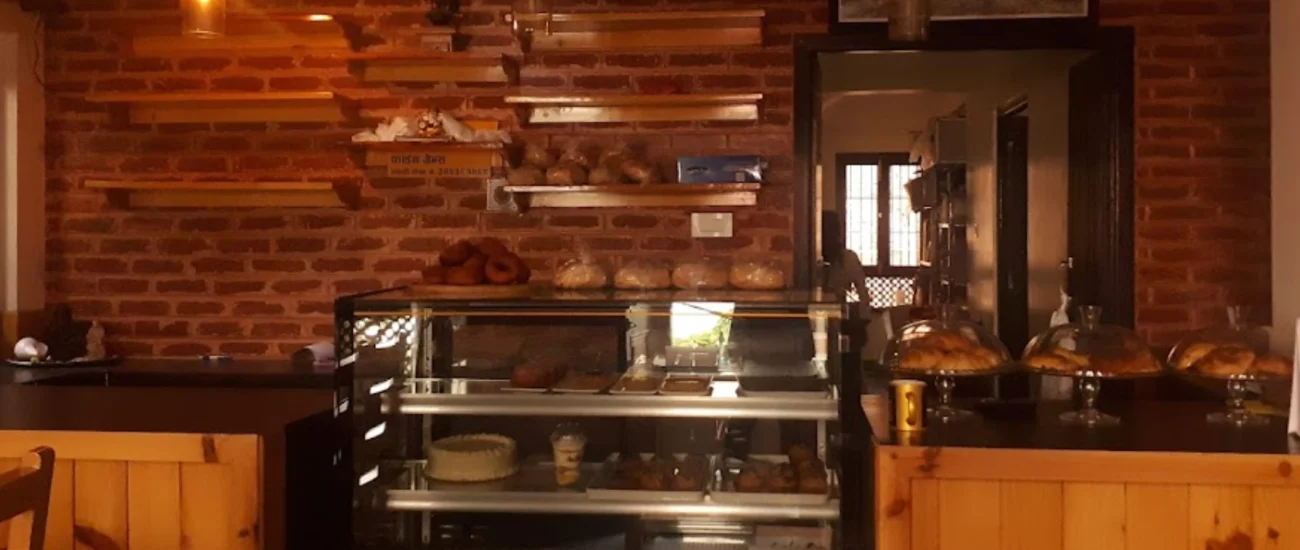
Infront Of Natural History Museum, Kathmandu
Fine Grains is a charming, hidden gem bakery nestled in the Swayambhu area of Kathmandu. Run by a passionate and welcoming couple, this small bakery is renowned for its artisanal baked goods and commitment to quality. Located in a narrow alley near the Natural History Museum, the bakery might be difficult to spot, but it’s a culinary destination for those seeking exceptional pastries and baked delights. The owners, with their background in professional cooking, bring a level of expertise and dedication that sets Fine Grains apart from typical local bakeries. Their philosophy centers on using high-quality ingredients and crafting each item with care and precision.
9863034914
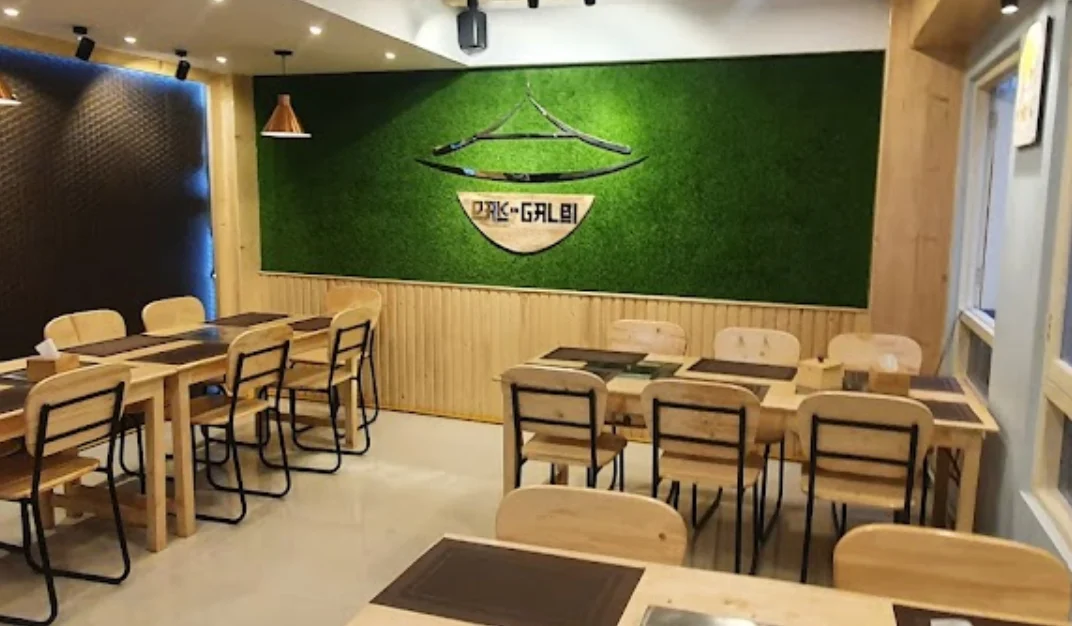
Lyakusa Galli, Kathmandu
Nestled in the historic Basantapur area of Kathmandu, Dak-Galbi Korean House is a hidden gem that brings authentic Korean cuisine to the heart of Nepal. This intimate restaurant offers a genuine Korean dining experience, complete with traditional table settings and a warm, inviting atmosphere. Located in a charming old building with recent renovations, the restaurant stands out with its prominent signage and welcoming ambiance. The owners are deeply connected to Korean culture, speaking the language fluently and ensuring an authentic culinary journey for their guests. With a diverse menu featuring traditional Korean specialties, the restaurant caters to both Korean food enthusiasts and curious first-time diners.
9810318956

Durbar Marg, Kathmandu
Jeju Do is an authentic Korean restaurant nestled in the heart of Kathmandu’s Durbar Marg, bringing the vibrant flavors and culinary traditions of Korea to Nepal’s capital. Named after the famous Jeju Island in South Korea, this restaurant offers a delightful journey through Korean cuisine, creating a unique dining experience for food enthusiasts and Korean food lovers. With its central location and warm, inviting atmosphere, Jeju Do has become a popular destination for those seeking genuine Korean gastronomy in Kathmandu.
9808380064
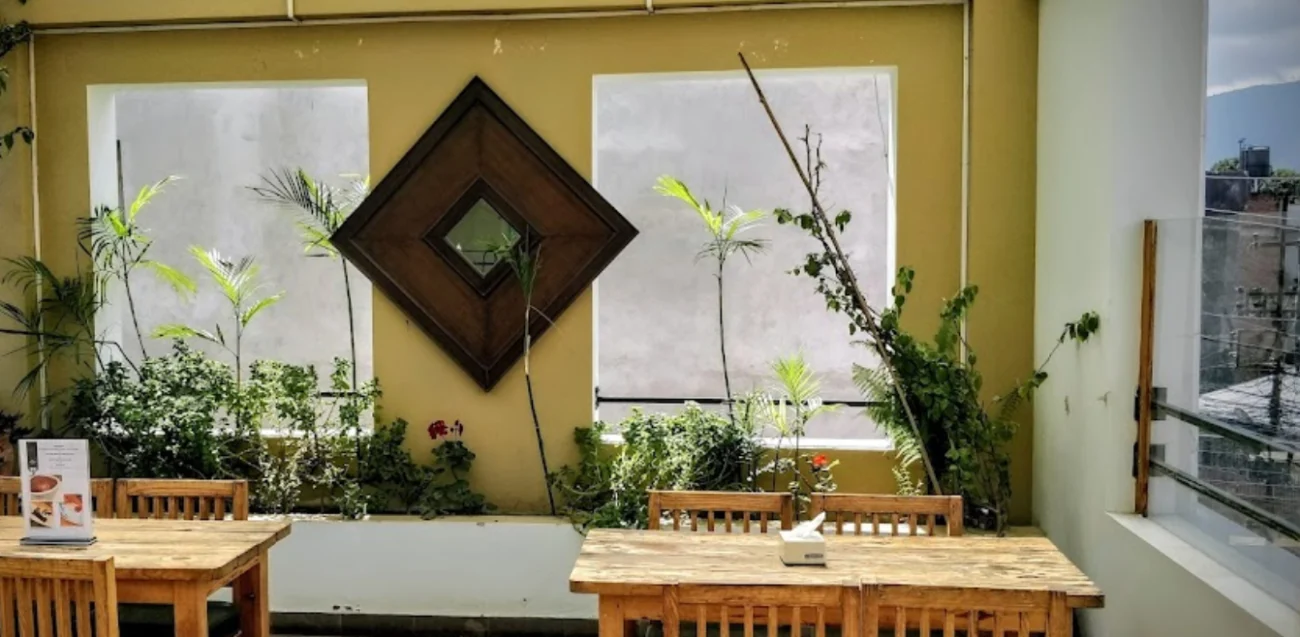
Arun Thapa Chowk, Sanepa, Lalitpur
On The Grill – Korean BBQ is a dynamic Korean restaurant nestled in the heart of Sanepa, Lalitpur, offering an authentic Korean dining experience. This family-friendly establishment specializes in traditional Korean barbecue, providing guests with a unique and immersive culinary journey. Owned and operated by Koreans, the restaurant prides itself on delivering genuine Korean flavors and cooking techniques. The restaurant features charcoal grilling at each table, allowing diners to experience the interactive and traditional method of preparing Korean BBQ. With a cozy and welcoming atmosphere, On The Grill has quickly become a go-to destination for those seeking authentic Korean cuisine in Kathmandu.
15909030
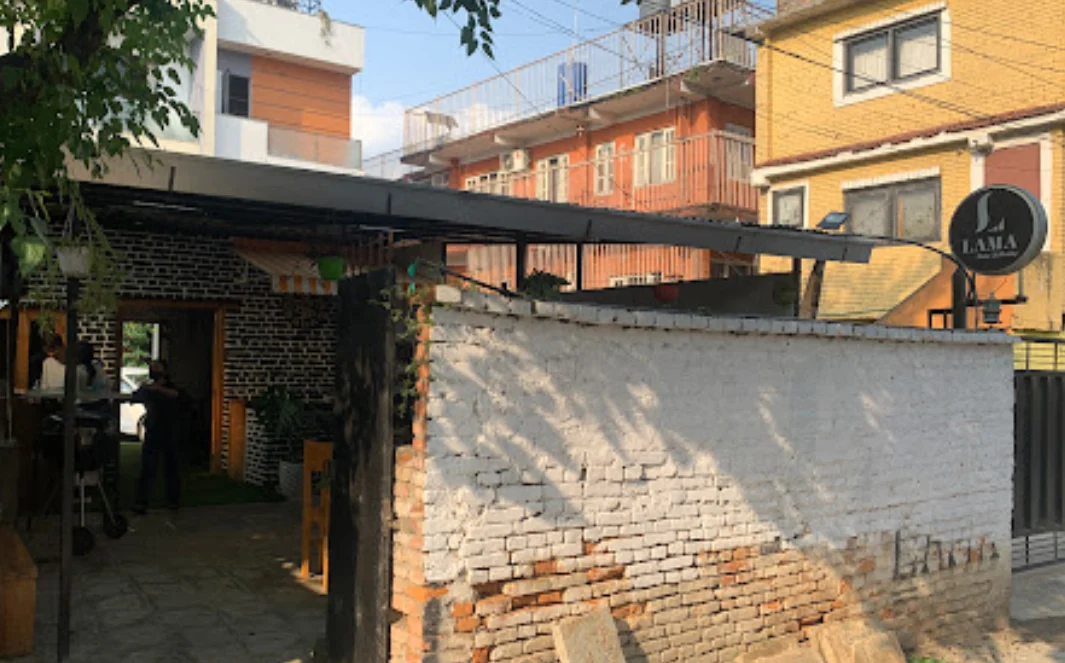
Kupondole Hts Rd, Lalitpur
LAMA is a distinctive burger restaurant located in the heart of Lalitpur, Nepal, that has carved out a reputation for serving some of the most delectable burgers in the city. Specializing in barbecue-style grilling, the restaurant offers an authentic and innovative approach to burger-making. With a focus on American and Serbian culinary influences, LAMA provides a unique dining experience that combines carefully crafted burgers with a welcoming atmosphere.
The restaurant has gained popularity for its commitment to quality ingredients, grilled-to-perfection meat patties, and creative burger variations that cater to diverse palates. From classic beef burgers to experimental flavors like Texas and Korean-style offerings, LAMA has established itself as a go-to destination for burger enthusiasts in Kathmandu Valley.
9702423320
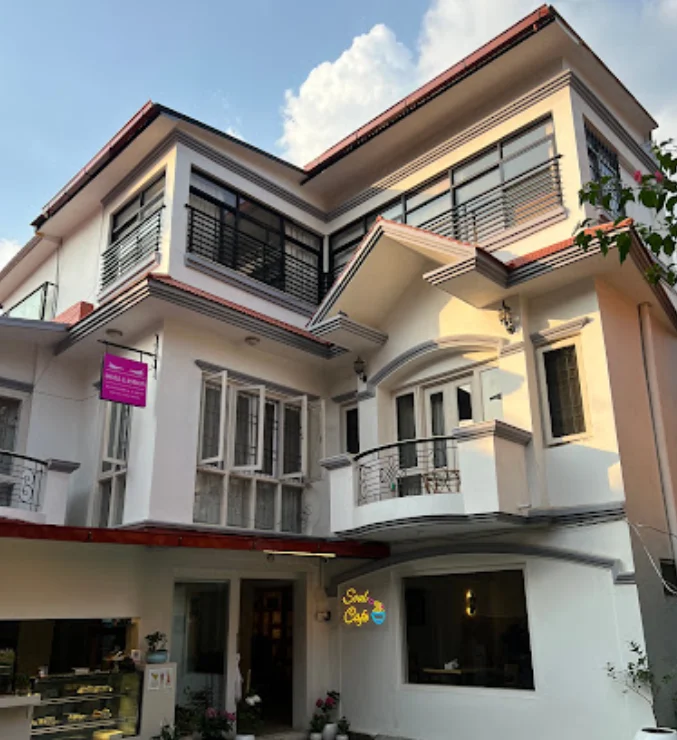
Rani Devi Marg, Kathmandu
Soul Cafe Lazimpat is a charming Korean restaurant nestled in the heart of Kathmandu’s Panipokhari neighborhood. This cozy cafe offers an authentic Korean dining experience, blending traditional flavors with a modern, welcoming atmosphere. Specializing in Korean cuisine, the restaurant provides a diverse menu that caters to both Korean food enthusiasts and curious newcomers. With its trendy and inviting ambiance, Soul Cafe has become a popular destination for those seeking delicious Korean dishes in a comfortable setting.
9714588760
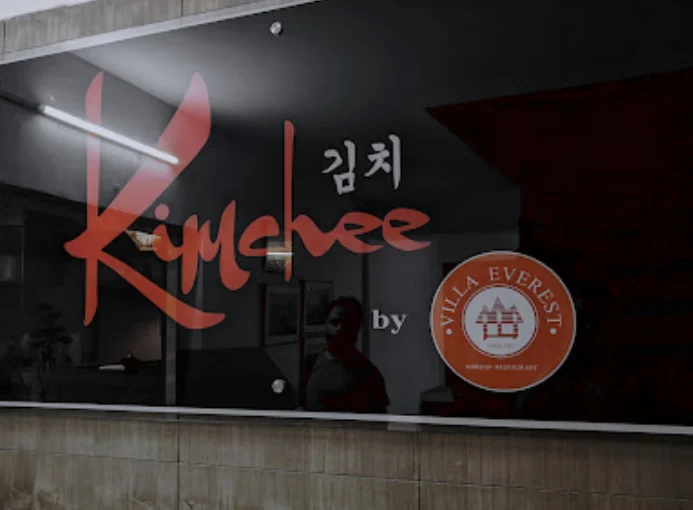
170m east from Boudha Gate, above Siddhartha Bank, Kathmandu
Kimchee Korean Restaurant and Karaoke is a vibrant dining destination in the heart of Boudha, Kathmandu, offering an authentic Korean culinary experience. This unique establishment blends traditional Korean cuisine with an interactive entertainment element through its karaoke facilities. Situated conveniently above Siddhartha Bank, the restaurant provides a welcoming atmosphere that caters to both food enthusiasts and social gatherings. With a diverse menu featuring classic Korean dishes like bibimbap, Korean barbecue, and kimbap, Kimchee has established itself as a go-to spot for those craving genuine Korean flavors. The restaurant’s open kitchen concept and bar add to its modern and engaging dining environment, making it an attractive venue for friends, families, and groups looking to enjoy good food and entertainment.
15438548
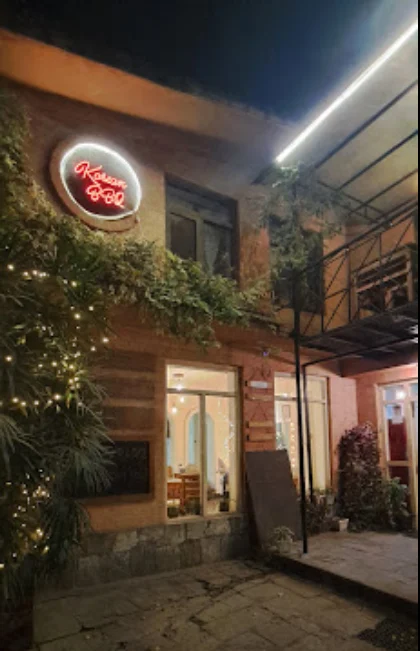
Jhamsikhel Marg, Lalitpur
Everest Arirang Korean Restaurant is a beloved dining destination nestled in the vibrant Jhamsikhel area of Lalitpur, Nepal. This Korean eatery has carved out a niche for itself by offering an authentic Korean dining experience in the heart of Kathmandu Valley. The restaurant combines traditional Korean culinary techniques with a welcoming atmosphere, making it a popular spot for both Korean food enthusiasts and curious diners. With its cozy interior and carefully crafted menu, Everest Arirang aims to transport diners to the streets of Seoul through its diverse selection of Korean dishes.
14700129
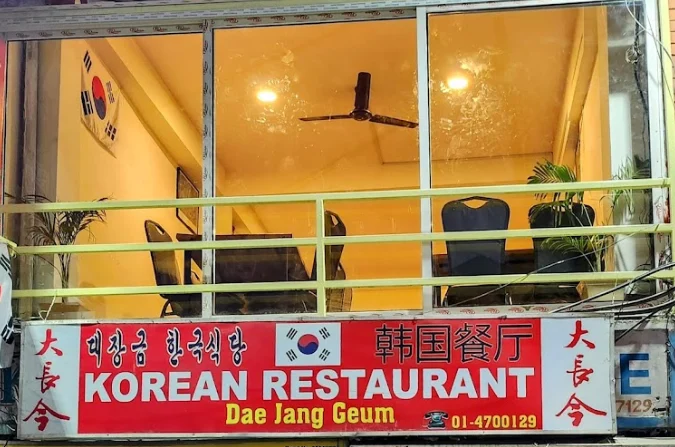
Paryatan Marg 29, Thamel, Kathmandu
Nestled in the vibrant Thamel neighborhood of Kathmandu, Dae Jang Geum Korean Restaurant is a culinary gem that brings authentic Korean flavors to Nepal. This restaurant stands out not just for its delectable cuisine, but for its commitment to creating a genuine Korean dining experience. The owner, who speaks fluent Korean and has deep knowledge of Korean culinary traditions, meticulously grows many of the ingredients, including fresh perilla leaves, ensuring an incredibly authentic taste. From traditional dishes like kimchi jjigae and bulgogi to modern favorites like bibimbap, every dish is crafted with attention to detail and a passion for Korean gastronomy.
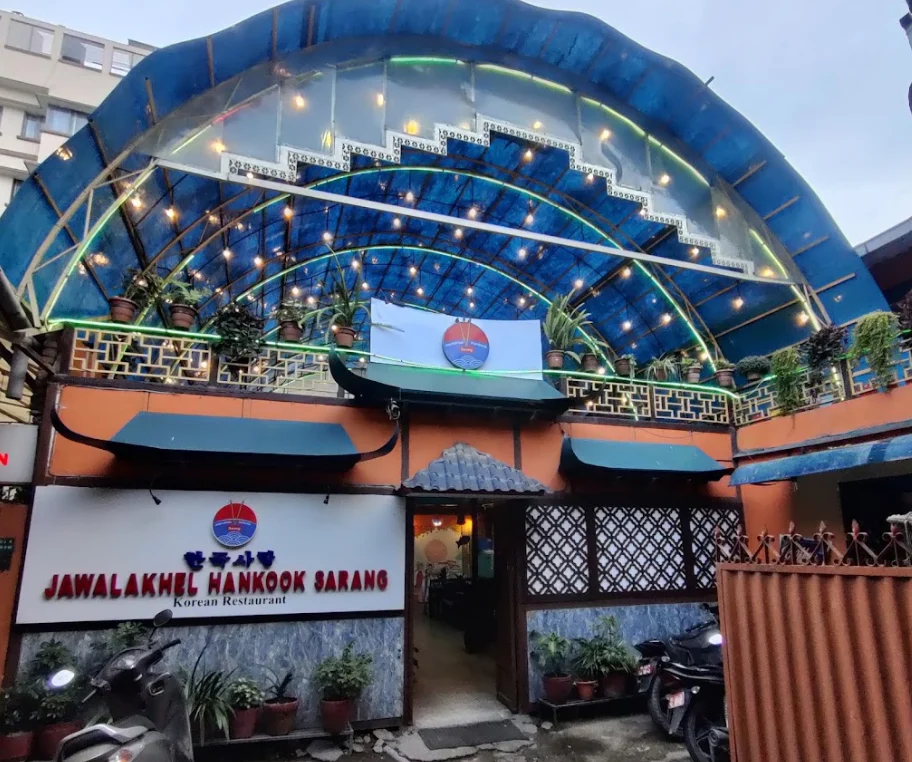
Jawalakhel Rd, Lalitpur
Nestled in the vibrant Jawalakhel area of Lalitpur, Hankook Sarang is a Korean restaurant that offers an authentic dining experience for those seeking genuine Korean cuisine. The restaurant provides a unique cultural touch by offering Korean traditional attire for customers to try, adding an immersive element to the dining experience. With a cozy and casual atmosphere, it has become a notable destination for Korean food enthusiasts in the Kathmandu Valley.
14987704
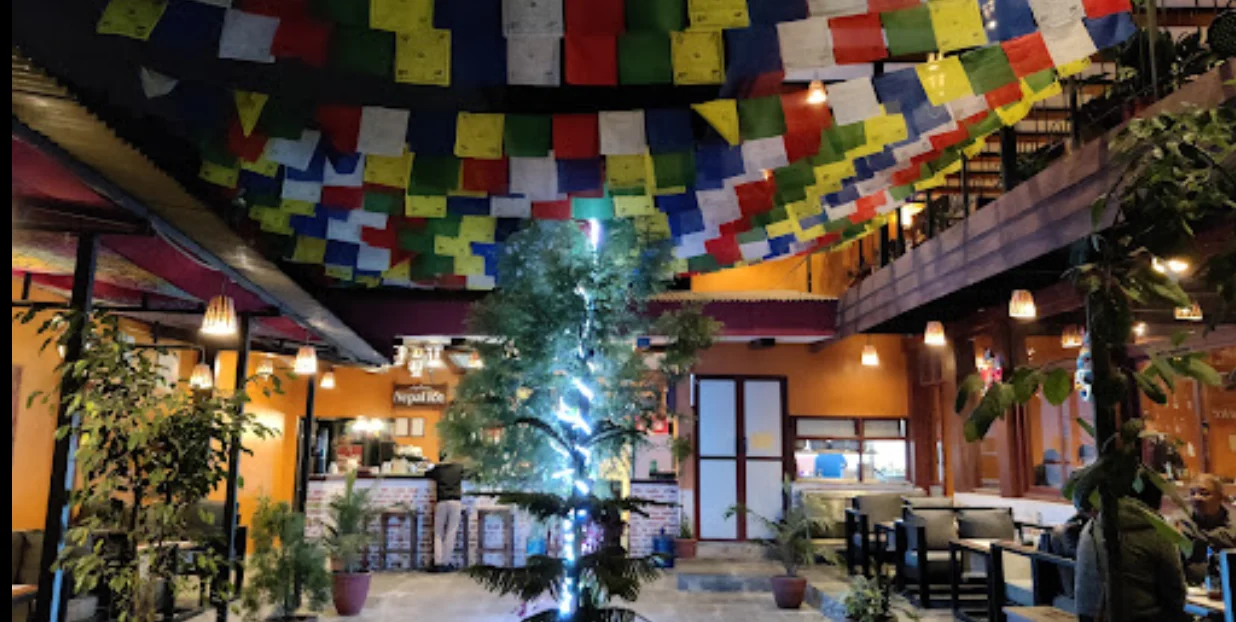
Naya Bazaar Marg, Kathmandu
Maulik Kitchen is a hidden gem nestled in the vibrant neighborhood of Sorhakhutte in Kathmandu. This charming restaurant offers a peaceful retreat from the bustling city streets, featuring a beautifully maintained garden and courtyard that provides a serene dining atmosphere. Known for its authentic Nepali cuisine and warm hospitality, Maulik Kitchen has quickly become a favorite among locals and travelers alike. The restaurant prides itself on serving delicious, generously portioned meals with a focus on traditional Nepali dishes like thali sets, momos, and a variety of flavorful options that showcase the rich culinary heritage of Nepal.
14513471
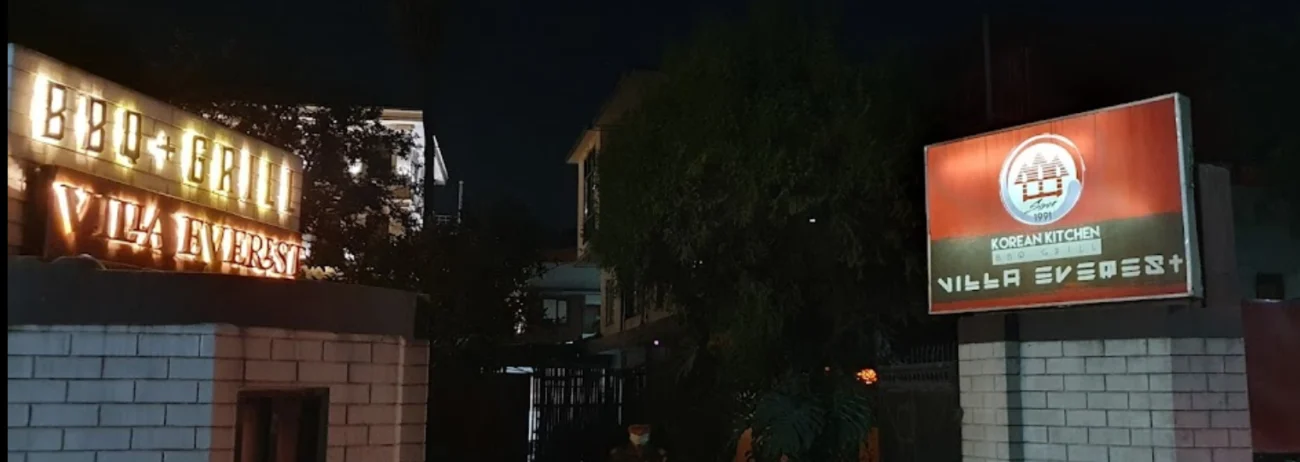
Amrit Marg, Thamel, Kathmandu
Villa Everest Korean Restaurant is a unique dining destination nestled in the heart of Thamel, Kathmandu. This Korean restaurant offers a distinctive culinary experience that blends authentic Korean cuisine with a warm, inviting atmosphere. Situated in a functional space that includes a hotel, karaoke bar, and barbecue facilities, the restaurant stands out as a gem for Korean food enthusiasts. The establishment prides itself on serving organic dishes, providing guests with not just a meal, but a comprehensive dining experience that includes live cooking, a cozy ambiance, and a range of Korean specialties.
9715356615

Chaksibari, Kathmandu
Nestled in the vibrant Thamel neighborhood of Kathmandu, Hankook Sarang is a Korean culinary destination that brings authentic Korean flavors to the heart of Nepal. This restaurant offers a genuine Korean dining experience, featuring a diverse menu of traditional Korean dishes that transport diners straight to the streets of Seoul. With its cozy atmosphere and commitment to authentic cuisine, Hankook Sarang has become a notable spot for both Korean food enthusiasts and curious local diners. The restaurant prides itself on serving a wide variety of Korean specialties, from classic favorites like bibimbap and kimchi to more specialized dishes that showcase the depth and complexity of Korean cuisine.
14542420
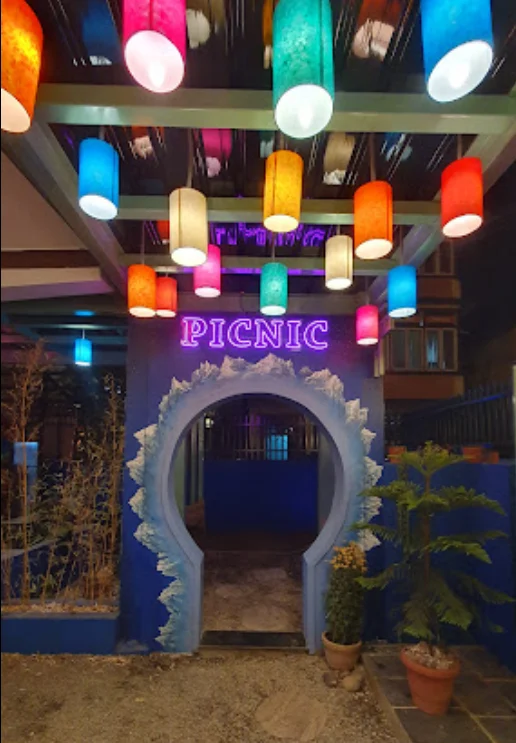
Tridevi Sadak, Kathmandu
Korean Kitchen Picnic is a charming Korean restaurant nestled in the heart of Thamel, Kathmandu. Specializing in authentic Korean cuisine, this intimate dining spot offers a genuine taste of Korea in the bustling streets of Nepal. The restaurant is known for its cozy atmosphere and traditional floor seating, providing diners with an immersive Korean dining experience. From delectable BBQ sets to classic dishes like bibimbap and kimbap, Korean Kitchen Picnic has become a go-to destination for Korean food enthusiasts in Kathmandu.
97715908711
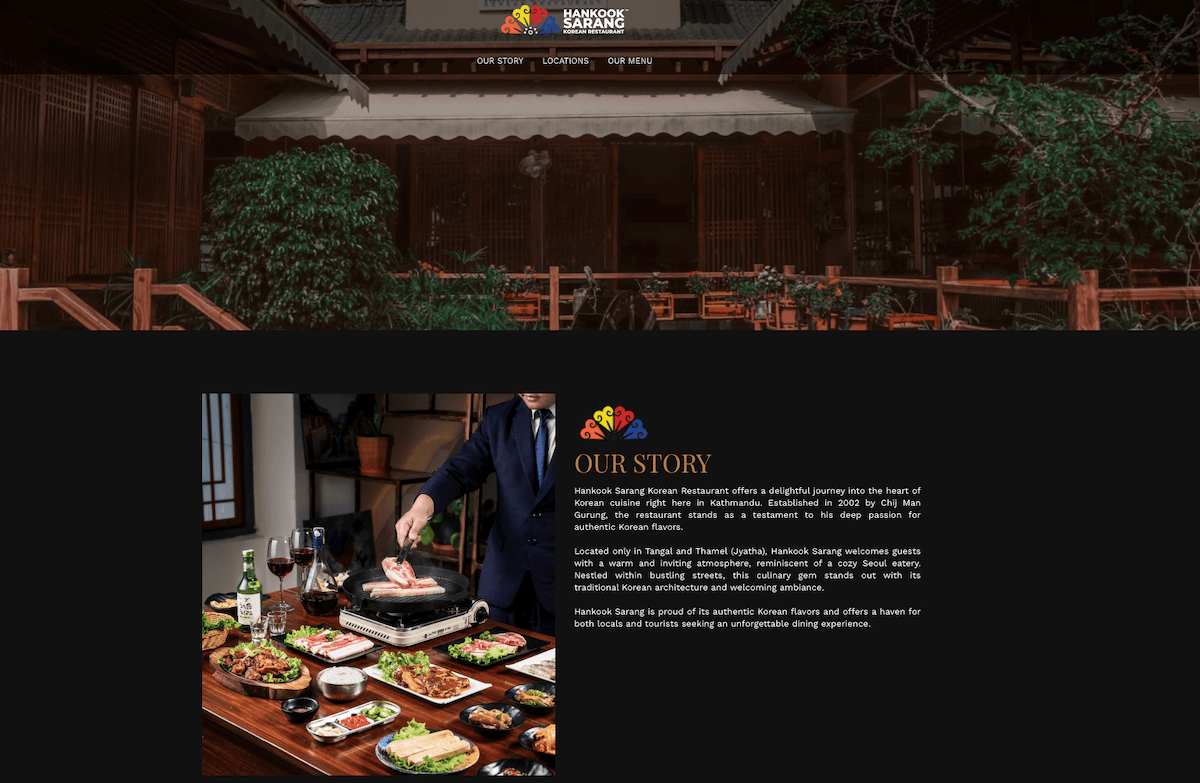
Bharma Kumari Marga 30, Kathmandu 44600, Nepal
Hankook Sarang Korean Restaurant, located in Market Mall, Thamel, is an authentic Korean dining establishment bringing genuine Korean flavors to Kathmandu. Known for its traditional Korean barbecue and diverse menu featuring favorites like bibimbap, gimbap, and pork belly, the restaurant has garnered over 670 customer reviews. Located in the heart of Thamel’s dining district, it offers both traditional Korean dining and modern Korean barbecue experiences. The restaurant combines authentic Korean cuisine with a cozy atmosphere, making it a popular destination for both Korean food enthusiasts and those new to Korean cuisine.
Korean cuisine has swiftly gained a devoted following in Nepal, bringing the vibrant tastes of Seoul to Kathmandu’s bustling streets and coexisting harmoniously with local dining traditions. From spicy kimchi to savory barbecue, Korean food offers Nepalis a bold, communal, and healthful dining experience that complements Nepal’s growing appetite for global flavors.
The History of Korean Food in Nepal
The introduction of Korean cuisine to Nepal began in the mid-2000s with small, family-run restaurants in tourist districts like Thamel and Patan. Early pioneers focused on classic dishes such as bibimbap (rice bowls topped with mixed vegetables and gochujang), bulgogi (marinated grilled beef), and kimchi (fermented vegetables). These modest establishments catered first to expatriates and adventurous travelers, gradually winning over Nepali diners.
By the 2010s, Korean pop culture’s global rise led by K-pop and K-dramas sparked a wave of curiosity about Korean food among Nepali youth. Korean chains and fusion cafés began opening across Kathmandu Valley, Dhulikhel, and Pokhara. These venues offered both authentic menus imported from Seoul and creative, localised twists that married Korean techniques with Nepali ingredients.
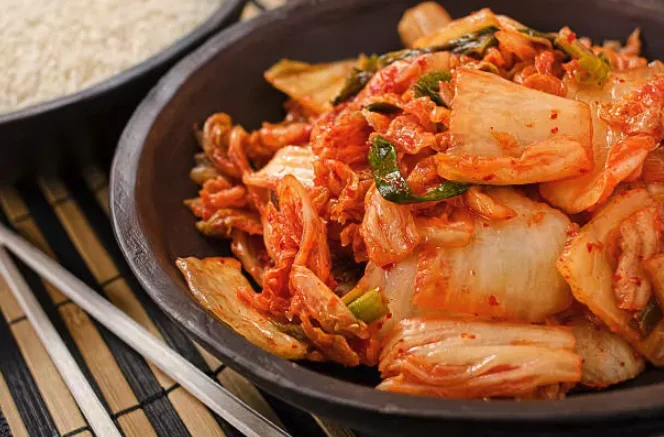
Why Korean Food is Popular in Nepal
Healthful and Balanced: Korean cuisine’s emphasis on vegetables, lean proteins, and fermented foods resonates strongly with Nepali diners seeking nourishing meals. Dishes like doenjang jjigae (soybean paste stew) and kongnamul muchim (seasoned bean sprouts) appeal to health-conscious families looking for balanced nutrition.
Communal Dining Experience: Much like Nepali dal bhat gatherings, Korean meals are built around sharing. Korean barbecue grills centrally at the table, encouraging group cooking and conversation. Shared side dishes banchan create a festive, social atmosphere that matches Nepali communal dining traditions.
Culinary Novelty: The bold spiciness of gochujang-based sauces, the tangy crunch of kimchi, and the interactive nature of tabletop grills provide a novel dining adventure. Young Nepalis and urban professionals enjoy these sensory experiences, often pairing them with Korean soju or local craft beers.
Nepali Adaptations and Local Twists
Korean restaurants in Nepal have innovated by integrating local tastes and ingredients, creating unique fusion dishes that honor both culinary traditions:
- Nepali-Style Kimchi: Many kitchens add local mustard greens or radishes to kimchi fermentations, using Himalayan pink salt for a distinctly Nepali flavor and softer texture.
- Spicy Momos Meets Tteokbokki: Creative cafés serve fusion bowls combining tingmo (steamed Tibetan bread) or momos with tteokbokki’s rice cakes and Korean chili sauce, creating a comforting cross-cultural snack.
- Dal Bhat Bibimbap: A popular hybrid that layers traditional dal, tarkari vegetables, and achar atop rice, topped with a fried egg and kimchi, then finished with gochujang for a vibrant flavor mash up.
- Yakitori-Style Chatamari: Fusion eateries grill marinated meat skewers using Korean bulgogi marinade on thin chatamari crepes, blending Newari and Korean street-food sensibilities.
The Cultural Impact of Korean Food
Strengthening Bilateral Ties: The spread of Korean cuisine in Nepal reflects growing diplomatic, educational, and cultural exchanges between the two nations. Korean language schools, cultural centers, and student exchanges have bolstered Nepali enthusiasm for all things Korean, including its food.
Employment and Entrepreneurship: Young Nepalis trained in Seoul’s culinary institutes are returning to open authentic or fusion Korean eateries. These ventures create jobs, drive tourism, and diversify Nepal’s restaurant landscape.
Social Media Buzz: Stunning food presentations colorful banchan platters, flame grilled barbecue, and elaborate stews have made Korean food a social media favorite. Instagram and TikTok posts from Nepal’s food influencers further fuel interest and foot traffic.
The Future of Korean Cuisine in Nepal
With established Korean franchise plans and homegrown fusion cafes on the rise, Korean cuisine in Nepal shows no signs of slowing down. New menu innovations, pop-up food festivals, and occasional restaurant collaborations between Nepali and Korean chefs promise to keep this vibrant culinary trend fresh and exciting.
Getting Popularity in Nepal: Korean Spicy Ramen
Korean spicy ramen has become one of Nepal’s fastest-growing comfort foods, especially among students and young professionals. Inspired by the fiery instant noodle culture of South Korea, local restaurants and street vendors now serve gourmet versions featuring rich, umami-packed broths, chewy noodles, and a generous drizzle of gochujang-infused chili oil.
This trend has been fueled by affordable price points, quick preparation times, and the dish’s adaptability: toppings range from local eggs and Himalayan greens to fusion ingredients like momo bits and pickled achar. Korean spicy ramen’s viral presence on social media platforms, with influencers showcasing their “ramen challenges” and custom spice levels, continues to drive its meteoric rise in Nepal’s dynamic food scene.

